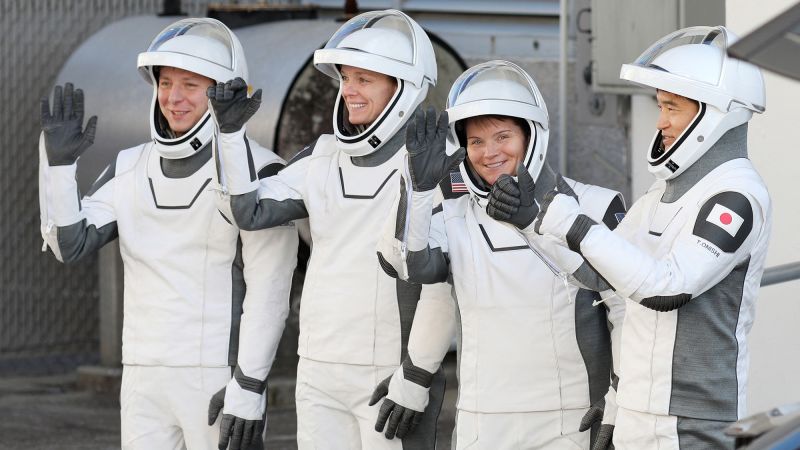SpaceX is preparing to resume its mission to launch a group of astronauts designated for the Crew-10 mission. This mission is especially significant as it aims to bring home NASA astronauts Sunnie Williams and Butch Wilmore, who have been stationed at the International Space Station (ISS) for a mission that originally unfolded as a brief trip, but has transformed into a politically sensitive nine-month stay. The complexity of this situation underscores the delicate interplay between space travel and political narratives.
The Crew-10 mission is a hallmark of routine staff rotations managed jointly by NASA and SpaceX. The launch is scheduled to take place at 7:03 p.m. ET on Friday from Kennedy Space Center in Florida, representing a critical point of transition for the astronauts involved. The mission will utilize a SpaceX Dragon capsule, which is positioned atop one of SpaceX’s Falcon 9 rockets, to transport four astronauts into orbit: NASA’s Anne McClain and Nichole Ayers, Takuya Onishi from the Japan Aerospace Exploration Agency (JAXA), and Russian cosmonaut Kirill Peskov.
Upon launch, the Crew-10 team is expected to rendezvous with the space station around 11:30 p.m. ET on Saturday. During their stay, a handover period will take place, during which they will collaborate with Williams, Wilmore, and their Crew-9 peers, Nick Hague from NASA and Aleksandr Gorbunov from Roscosmos. The Crew-9 Dragon capsule has been stationed at the ISS since September, marking an extended duration, and if all goes according to plan, the Crew-9 astronauts will be able to depart back to Earth on March 19.
Initially, Williams and Wilmore were scheduled to return as early as the upcoming Sunday. However, their return is contingent upon the safe arrival of the Crew-10 astronauts. Recently, SpaceX had to abort a launch attempt for the Crew-10 mission Wednesday due to complications with its launchpad ground systems, resulting in a shift of the launch to a later date. This delay has re-ignited discussions regarding the astronauts being perceived as “stranded” in space—a notion that Williams and Wilmore have strongly contested.
In interviews, both astronauts expressed their dissatisfaction with the media narrative suggesting they were “stranded” or “abandoned.” They pointed out that their situation has frequently been depicted in a misleading manner. Wilmore, in an interview with CNN, implored the public to shift the narrative to reflect their preparedness and commitment, underlining that they were not in distress.
As the transition to the Crew-10 mission approaches, both Williams and Wilmore have managed to maintain their spirits, working diligently aboard the ISS. Their extended stay in space has not been without its challenges, which include political implications that have emerged amidst public scrutiny. SpaceX’s CEO Elon Musk and President Donald Trump have both highlighted claims that the Biden administration has neglected the astronauts. However, Williams and Wilmore were well-informed back in summer regarding their eventual return.
Their original journey to the ISS was marked by complications during the inaugural crewed test flight of Boeing’s Starliner capsule, leading NASA to integrate them into the official space station crew. This strategy was adopted rather than launching a separate mission, which would have been financially burdensome. NASA’s Commercial Crew Program manager, Steve Stich, emphasized that NASA never contemplated a situation that would involve sending standalone missions to rescue astronauts, given the fiscal implications.
Interestingly, Musk’s recent comments on social media about an offer to retrieve the astronauts months ago have generated considerable debate. A former NASA official refuted claims that such a proposal was made, asserting that if it had been presented, NASA would have not had the financial bandwidth to consider it. This complex and uncertain scenario continues to evolve, showcasing not only the intricacies of human spaceflight but also the broader implications of political dialogue surrounding it.
Both astronauts have consistently vocalized their satisfaction with their mission, maintaining that they are adequately equipped and well-fed while on the ISS. They express enthusiasm about their work and a desire to continue contributing to the objectives of their mission. As their eventual return approaches, they remain focused on their tasks and contributions to ongoing scientific endeavors aboard the ISS.
The impending return of Crew-9 astronauts Williams and Wilmore hinges destablly on the successful execution of the Crew-10 mission. NASA assures that sufficient personnel levels are to be maintained aboard the ISS, as the agency seeks to uphold operations within parameters that ensure the safety and efficiency of space endeavors. Amid nationwide political discourse, their mission serves as a microcosm of wider issues intersecting space exploration and governmental responsibilities.












